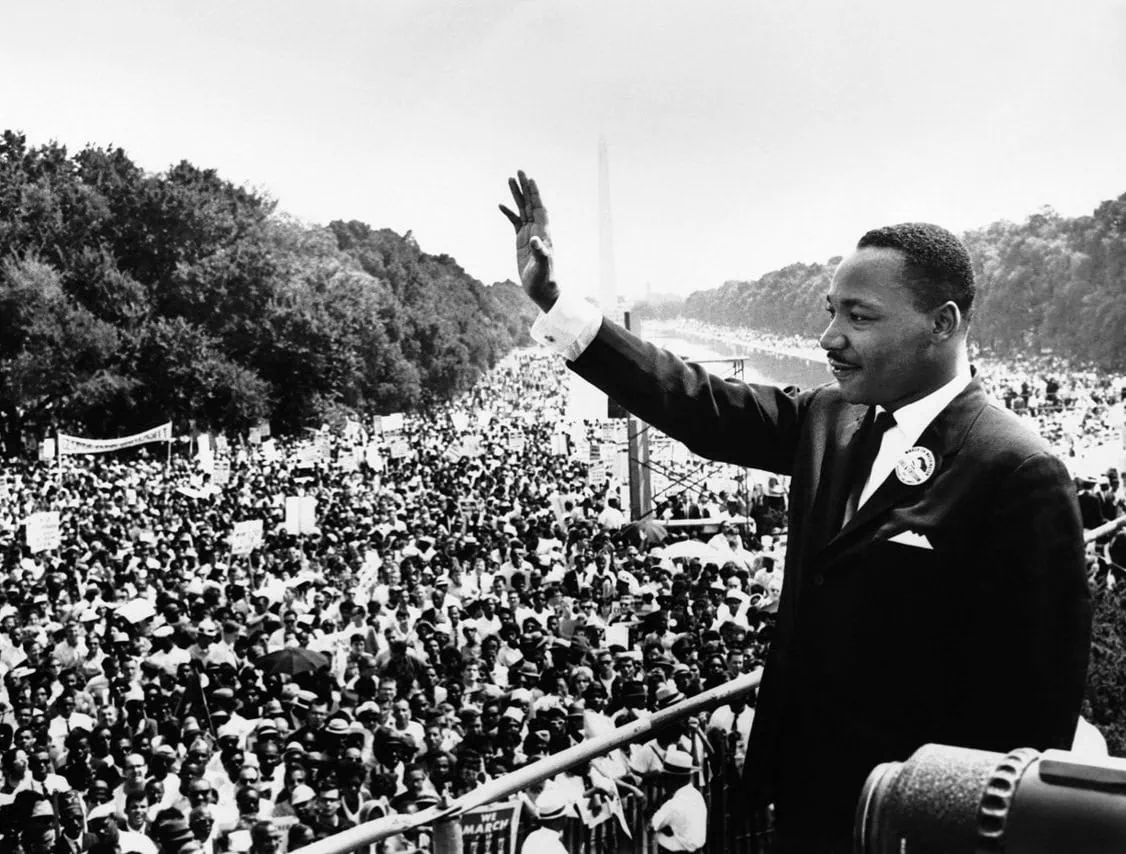Welcome to a pivotal historical moment: the March on Washington for Jobs and Freedom. This monumental event, which took place on August 28, 1963, marked a turning point in the U.S. civil rights movement and continues to influence the fight for equality today. Understanding the impact of such significant historical movements can inspire and shape your career path.
This guide delves deep into the march that demanded civil and economic rights and highlighted the unyielding power of peaceful protest. By learning about the leaders, the events that led to this massive gathering, and the enduring outcomes, you will gain insights into how collective advocacy can foster change and how these lessons apply to today’s job market.
Join us as we explore the reasons behind the march, the key participants, and the subsequent changes that redefined a nation. Understanding this will enrich your historical knowledge and empower you in your professional journey in a diverse work environment.
The Significance of the March on Washington
The March on Washington for Jobs and Freedom, held on August 28, 1963, was a pivotal event in the history of the United States, particularly in civil rights and cultural diversity. This massive gathering aimed to shine a light on the injustices African Americans faced and to demand social and economic equality. Let’s delve deeper into why this march was so significant:
Unified Call for Justice
One of the march’s hallmarks was its ability to unite people from diverse backgrounds. The event brought together individuals nationwide, illustrating a widespread commitment to change. This unity highlighted the march’s broader implications for civil rights and social equity, emphasizing that the fight for justice was a collective endeavor.
Platform for Voices
Indeed, the march provided a platform for civil rights leaders to voice their demands and visions. Most notably, Martin Luther King Jr.’s “I Have a Dream” speech echoed across the steps of the Lincoln Memorial and worldwide, inspiring others to hope and act for change. This speech, among others, underscored the urgent need for societal transformation.
Impact on Legislation
Furthermore, the March on Washington Civil Rights movement directly influenced landmark legislation, including the Civil Rights Act of 1964 and the Voting Rights Act of 1965. Drawing attention to the systemic inequalities plaguing the nation, it successfully pressed lawmakers to address civil rights as a moral issue and a legal necessity.
Learn More
- Here’s a deep dive into the Civil Rights Act of 1964 at the National Archives.
- At the Martin Luther King, Jr. Research and Education Institute, you can learn more about the impact of MLK’s speech on modern civil rights movements.
The march was not just a significant event in American history; it was a transformative moment that continues to influence discussions and actions on civil rights and workforce diversity today. It is a testament to the power of collective action and the ongoing struggle for equality and justice.
Key Figures in the March on Washington
The March on Washington was spearheaded by leaders of various civil rights groups and supported by multiple influential figures, each playing a crucial role in the civil rights movement. Here are some of the individuals who were instrumental in organizing and leading the march:
Martin Luther King Jr.
Undoubtedly the most renowned speaker at the march, King’s delivery of the “I Have a Dream” speech marked a historic moment in civil rights activism. His powerful words became synonymous with the struggle for equality.
A. Philip Randolph
A leader in the African American civil rights movement and the American labor movement, Randolph was the driving force behind the march. He had long advocated for the civil rights of African American workers and was vital in bringing together labor and civil rights groups for the march.
Bayard Rustin
The chief organizer of the March, Rustin, is often overlooked despite his critical role. An adviser to Dr. King, Rustin orchestrated the march’s logistics, coordinating thousands of participants and managing the day’s events.
John Lewis
At the time of the march, Lewis was a young Student Nonviolent Coordinating Committee (SNCC) leader. His impassioned speech, advocating for peaceful protest and legislative change, underscored the urgency of the movement.
Women’s Involvement
Although less highlighted, women played significant roles in the march. Dorothy Height, president of the National Council of Negro Women, stood with the leaders, although she did not speak. Women like Rosa Parks and Mahalia Jackson were instrumental in mobilizing support and adding moral power to the movement.
These leaders brought unique perspectives and skills to the event, collectively guiding one of the most significant demonstrations in American history. Their efforts highlighted the immediate need for civil rights and set the stage for future progress in racial equality in the United States. Learn more about women’s roles in the movement at the National Women’s History Museum.
Events Leading Up to the March
The March on Washington did not occur out of nowhere. It resulted from years of growing struggle for civil rights, framed by a series of pivotal events and shifts in public opinion. Here’s a look at crucial preludes to the march:
Increasing Civil Rights Activism
Activism intensified in the years before the march. The success of the Montgomery Bus Boycott and the founding of the SNCC set the stage for more significant actions.
The Role of the Cold War
The Cold War context also pressured the U.S. government to address civil rights. International criticism during the Cold War highlighted racial discrimination, urging American leaders to consider reforms.
The Freedom Rides
Another precursor was the 1961 Freedom Rides. Integrated bus trips through the South challenged segregation and provoked essential legal and public reactions.
Racial Violence and Public Opinion
The media coverage of violent attacks against peaceful protesters played a crucial role. Such incidents cemented public opinion and increased support for civil rights legislation.
John F. Kennedy’s Civil Rights Address
A few months before the march, President Kennedy delivered a comprehensive civil rights speech, promising federal legislation. This address marked a significant shift in the government’s stance on civil rights. More about Kennedy’s involvement can be found at the John F. Kennedy Presidential Library and Museum.
The convergence of these events created a ripe environment for the March on Washington civil rights movement, highlighting the urgent need for change and setting a historical stage for what was to follow.
The March: A Day to Remember
The March on Washington, held on a hot summer day, united over 250,000 people in what would become a watershed moment for the civil rights movement. The day was filled with speeches, songs, and prayers, each underscoring the urgent call for justice and equality.
Organization and Participation
The march was meticulously planned to ensure peaceful and orderly conduct. Volunteers and organizers worked together, guiding the massive crowd and facilitating daily events.
Powerful Speeches and Songs
Speakers, including Martin Luther King Jr., John Lewis, and Mahalia Jackson, delivered powerful messages calling for civil and economic rights. King’s “I Have a Dream” speech resonated deeply and became iconic in American civil rights history. It is still widely quoted to this day.
Celebrities and Support
Notable figures like Marlon Brando, Bob Dylan, and Joan Baez joined, showing solidarity. Their presence helped draw international media attention, amplifying the event’s significance.
Impact of Media Coverage
The extensive media coverage helped capture the national and global audience, highlighting the significance of the demands made during the march. This was vital in garnering support from those who could not attend.
The march demonstrated the scale of support for civil rights and the potential for peaceful protest to enact social change. More on the impact of media can be explored through resources like the Library of Congress Civil Rights History Project.
Outcomes and Impact of the March on the Civil Rights Movement
The March on Washington had profound and lasting effects on American society and the legislative framework of civil rights. Its success can be measured by the significant changes that followed.
Legislative Achievements
The most direct outcome was the passage of crucial legislation, including the Civil Rights Act of 1964 and the Voting Rights Act of 1965. These laws marked a massive stride towards racial equality.
Influence on Public Opinion
The march also had a powerful effect on public opinion. It showcased the strength and unity of the civil rights movement, swaying a broad section of America to support the cause of equality.
Boosting Civil Rights Organizations
Following the march, civil rights organizations saw a notable increase in membership and support, which strengthened their ability to orchestrate more actions and advocacy.
Global Impact
Additionally, the march influenced civil rights movements worldwide. It became a symbol of nonviolent protest utilized globally against various forms of injustice.
Understanding these impacts helps us appreciate the march’s role in shaping a more equitable society. For further reading on civil rights legislation, visit the Our Documents initiative.
Continuing Legacy of the March on Washington
The March on Washington remains a vibrant symbol of people’s power to demand and enact change. Its legacy endures through various aspects of modern civil rights movements and its influence on contemporary social justice campaigns.
Inspirational Blueprint
The march has served as a blueprint for countless protests and actions advocating for equal rights across different sectors of society, demonstrating the effectiveness of peaceful, organized demonstrations.
Educational Impact
School curriculums now widely cover the march, helping to educate new generations about the history of civil rights movements and the enduring struggle for equality. This awareness cultivates a continuous commitment to justice.
Cultural Representation
The imagery and speeches from the march have permeated cultural expressions such as films, music, and literature, keeping the memory and messages alive and relevant.
Annual Commemorations
Annual events and commemorations of the march help remind us of our ongoing responsibility to champion civil rights. They motivate continuous efforts toward achieving justice for all.
This legacy honors those who participated and challenged us to keep pushing for progress. Explore the National Park Service’s Civil Rights Movement for insights into modern commemorations and educational initiatives.
How Employers Can Foster Diversity Inspired by Civil Rights Movements
The principles of inclusivity and justice championed during the March on Washington have practical implications for today’s workplaces. Employers can take inspired actions to advance diversity and create equitable environments.
Implement Inclusive Hiring Practices
Adopting inclusive hiring strategies is crucial. Companies should aim to diminish biases in recruitment processes, broadening opportunities for all individuals, especially those from historically marginalized groups.
Training and Awareness Programs
Regular training programs focusing on diversity, equity, and inclusion can heighten awareness and foster a supportive workplace culture.
Create Diversity Task Forces
Forming task forces dedicated to diversity can ensure that these initiatives are thoughtful, continuous, and aligned with organizational goals.
Support Employee Resource Groups (ERGs)
Encouraging the formation of ERGs can provide platforms for employees to connect over shared identities and experiences, enriching the organizational culture.
By embedding these practices, employers can echo the aims of the March on Washington civil rights movement, promoting a workplace environment that respects and celebrates diversity. Consider referring to the Equal Employment Opportunity Commission for guidelines on developing these programs.
FAQs
Here are some frequently asked questions about the March on Washington civil rights movement that help clarify its significance and outcomes.
What was the main goal of the March on Washington?
The primary aim was to advocate for civil and economic rights for African Americans, highlighting issues like segregation and unemployment.
How did the march impact American society?
It was crucial in passing critical civil rights legislation and helped shift public opinion on racial equality.
Who organized the March on Washington?
A. Philip Randolph and Bayard Rustin were the chief organizers, backed by leaders from prominent civil rights organizations.
Was the march peaceful?
Despite the large turnout, the march was peaceful, showcasing the power of nonviolent protest.
How does the march influence us today?
It has inspired numerous movements and reforms that strive to address inequality, showing the ongoing relevance of peaceful activism.
Conclusion
The March on Washington remains a profound symbol of the fight for civil rights, demonstrating the impactful union of voice, action, and solidarity. This historic event reshaped America’s social and legal landscape and inspired movements worldwide, advocating for equality and justice across various domains.
Carrying Forward the Legacy
As we reflect on the significance and achievements of the March on Washington, it becomes crucial for current and future generations to continue this legacy. Engaging with platforms that promote diversity and inclusion is essential.
Join Diversity Employment, search diversity jobs and upload your resume today! This platform is dedicated to advancing workplace diversity and empowering job seekers from diverse backgrounds. Your participation is a step towards creating a more equitable world, mirroring the goals that fueled the March on Washington. Together, we can continue to make significant strides in the civil rights movement.




